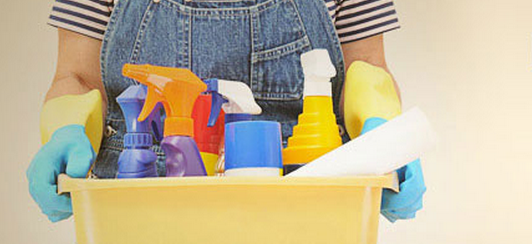
Helping people make healthy choices
Helping people make healthy choices
An Overview, Online Databases
A healthy home and family is a goal we all share. Smart, trusted resources can guide us to worthwhile changes.
I directed the creation of an online tap-water quality guide for 40,000 towns. I led the team that produced a simple, data-rich guide to good food on a tight budget, and ingredient safety reports for 2,000 household cleaners and 1,400 sunscreens.
With the right tools, it can be easy to click, learn, and act.

National drinking water database
National drinking water database
Online Databases
How safe is your tap water? Water suppliers aren’t required to notify customers of some common water pollutants. I directed the research team that set out to fill the gaps.
First, we requested all available water testing data from state water officials. Then, with simple software and intensive data cleanup, we transformed the 20 million tap-water test results we received into an interactive, online atlas. People in 40,000 towns and cities can now learn about their local tap-water pollutants, possible health risks, and solutions.
A partnership with the New York Times gave a major, same-day exposé.

Bottled water scorecard
Bottled water scorecard
Online Databases
Every 27 hours Americans drink enough bottled water to circle the entire equator with plastic bottles stacked end to end.
I served as project director for the bottled water scorecard team. Our goal was to create an online guide revealing what each manufacturer is willing to divulge about their water’s source, treatment, and purity.
The results were eye-opening. In the first 24 hours after online publication, 350,000 people viewed the study to learn about their favorite brands. Many top brands flunked our transparency test.
“People-powered research” helped us compile the project data. We asked our supporters to send labels. Hundreds responded. Then we scoured company websites and called customer service numbers for missing information.
In the end, we found that nearly one-third of brands surveyed reveal nothing about the treatment and purity of their water. And nearly half of it is sourced from municipal tap water – at up to 1,900 times the cost.
We advocated for greater transparency, and recommended filtered tap water – a better choice for health and the environment.

Healthy Cleaners Guide
Healthy Cleaners Guide
Online Databases
What’s in the bottle? Look on the label of any household cleaning product and you’ll likely find directions, warnings, marketing claims – but few if any ingredients.
Reading labels won’t always help you find safe products.
To fill the gap, I directed the research team that created an online guide to healthy cleaners, rating more than 2,000 products for the bathroom, kitchen, floors and more.
To make this project work, we upped the power of every label by adding data from company websites and workplace product hazard reports. We checked our expanded labels against 15 government and industry ingredient hazard lists, creating ratings that cover nearly 200 brands and over 1,000 ingredients.
With this online guide you can steer clear of products with ingredients linked to asthma, cancer, skin reactions and other concerns – the things the label doesn’t show.

EWG’s Skin Deep cosmetics database
EWG’s Skin Deep cosmetics database
Online Databases
This database has become a game-changer.
Now in its eight year, the Skin Deep database, an interactive health guide, has logged nearly 250 million searches from people seeking safer personal care products.
I hatched the idea for Skin Deep, then led the project team (2004-2012) and helped co-found a successful national campaign (safecosmetics.org) that grew to 1,300 companies and 150 advocacy groups. Skin Deep has fueled the campaign and an ongoing green revolution in the personal care product industry.
The birth of the project came in 2002 as I read industry-funded cosmetic ingredient safety reviews. I was surprised that many of them listed health concerns. And I wondered how many everyday personal care products contain these potentially risky ingredients.
So I set EWG’s research team in motion. We reviewed government databases, ingredient safety studies, and product labels. We compiled 60 different datasets and cross-linked them, ultimately creating safety reports for nearly 10,000 ingredients and tens of thousands of products.
Skin Deep now features ratings and ingredient safety data for over 60,000 personal care products. It has been a backbone sustaining the national Campaign for Safe Cosmetics. It helped spur the cosmetics industry’s launching of a Consumer Commitment Code, with 600 companies pledging to use ingredients proven safe. It has inspired new online health guides from other groups. And it has provided support for national cosmetics policy reform that would bring basic safety standards to a largely unregulated, $60 billion industry.

Good food on a tight budget
Good food on a tight budget
Online Databases
Many families struggle to meet their weekly food budget. The most affordable foods often seem to be the least nutritious.
To help, I directed a project team in creating the “Good Food on a Tight Budget” guide. This practical, data-packed resource lists the most nutritious, most affordable, and least polluted choices from among common fruits, vegetables, proteins, grains and dairy foods.
Backing up the guide is our review of nearly 1,200 foods. We analyzed data from government agencies and other research groups on food prices, nutrients, artificial ingredients, and pesticides and other pollutants. The guide shows the 100 foods that rank best for these factors on balance.
We partnered with the hunger advocacy group Share our Strength to get the guide in the hands of families that need it most.
